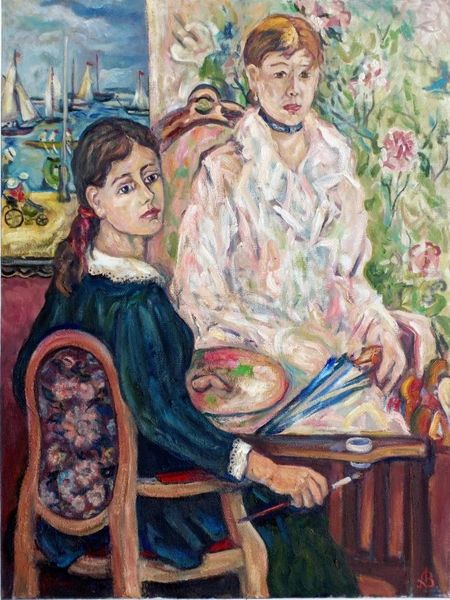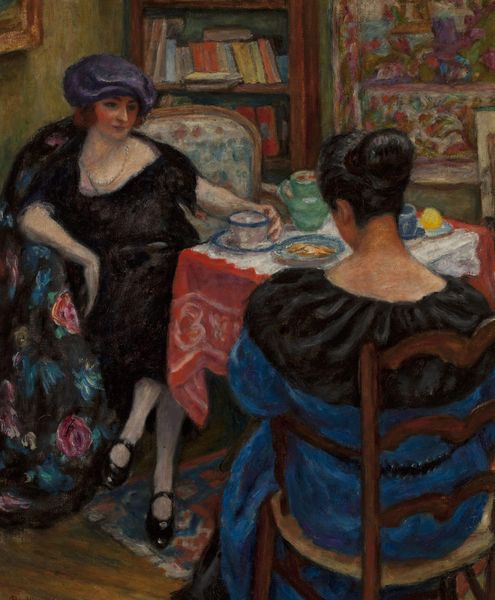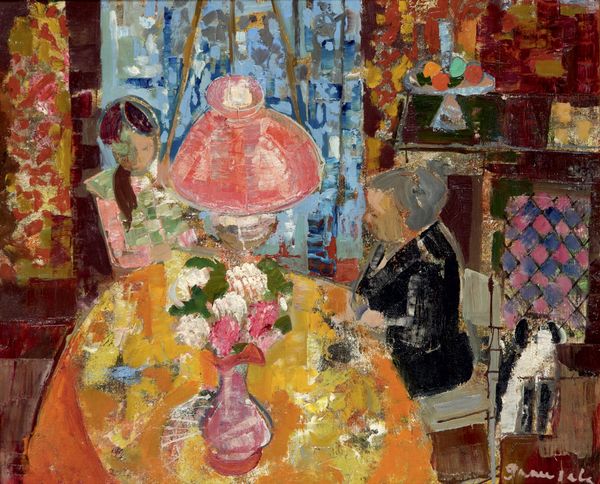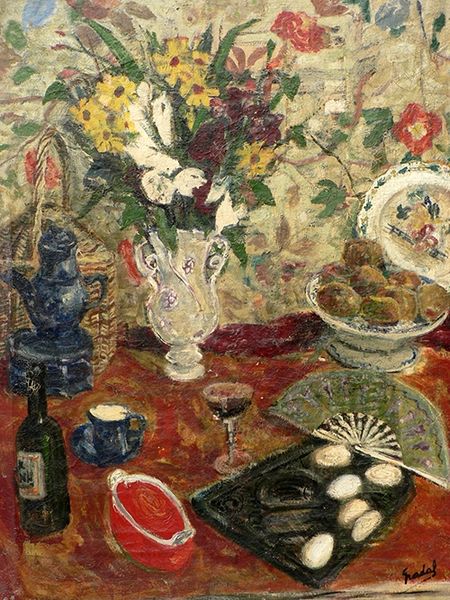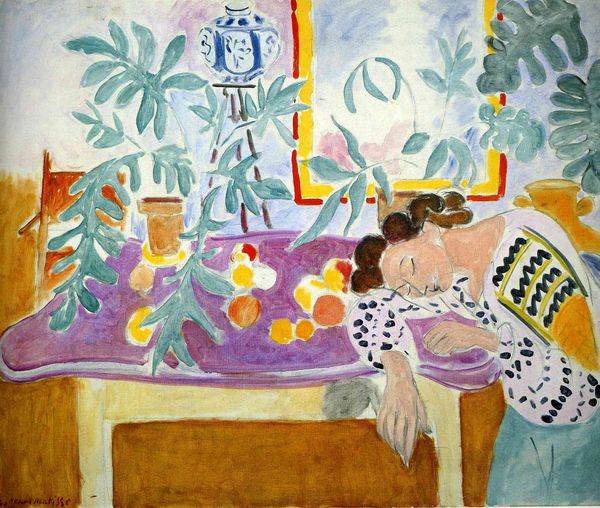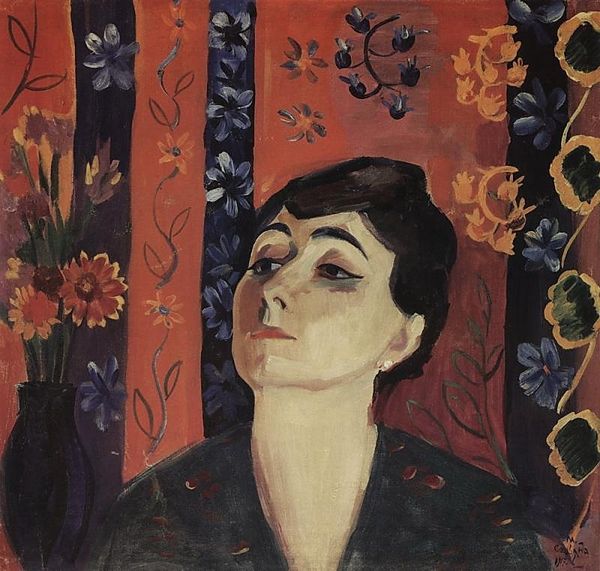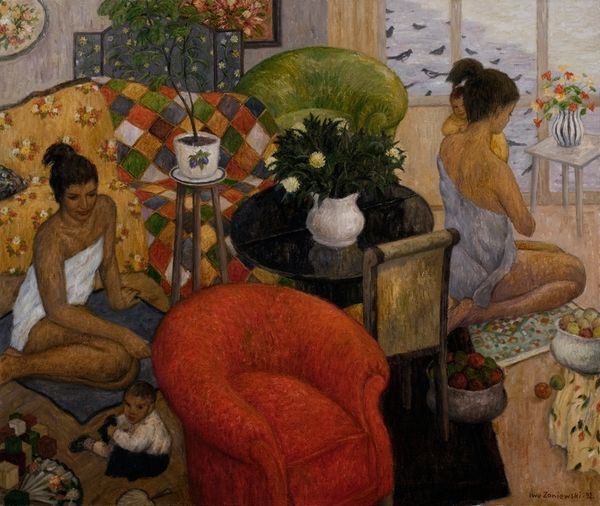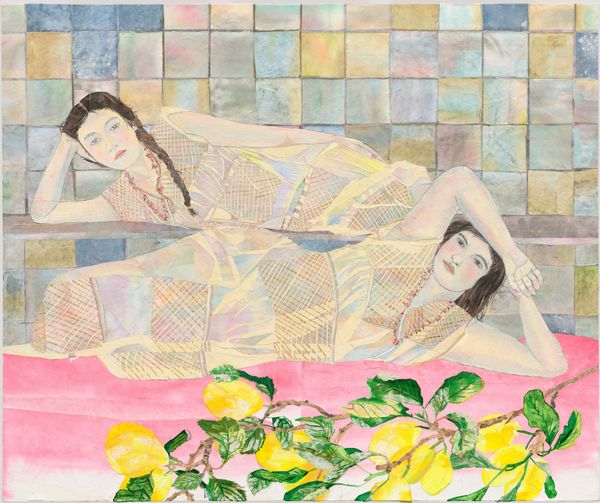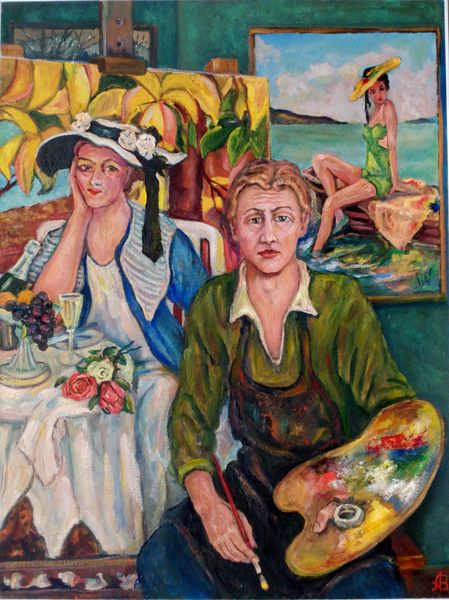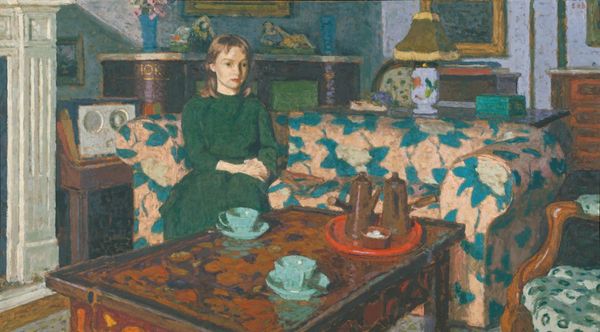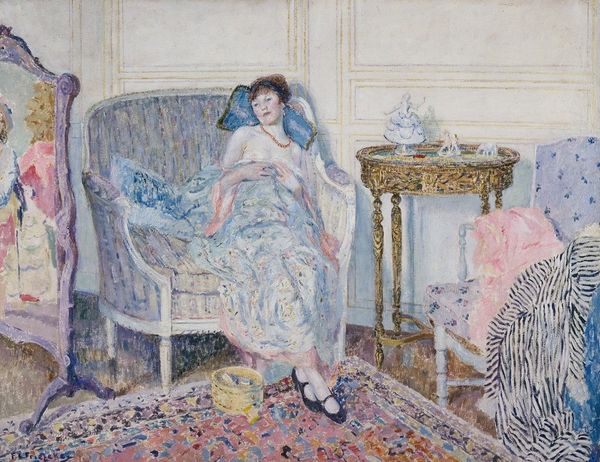
#
figurative
#
abstract painting
#
water colours
#
handmade artwork painting
#
oil painting
#
acrylic on canvas
#
naive art
#
painting painterly
#
painting art
#
watercolour illustration
#
watercolor
Copyright: Modern Artists: Artvee
Curator: Looking at Matisse’s “Chinese Casket” from 1922, I am immediately struck by the sheer joy of color. There's a visual feast unfolding here. What do you make of it? Editor: My first impression is one of posed serenity disrupted by the lively patterns, like constraints of bourgeois life attempting to contain feminine vitality. It has the effect of something both stable and a little jarring, even unsettling. Curator: Interesting. I’m particularly drawn to the compositional choices. Note the namesake object placed right at the table’s edge, demanding consideration as an important key. Do you feel its placement adds to that unsettling mood? Editor: Definitely. It’s a symbol, I think, of cultural exchange and exoticism. The flowers, roses, often represent love and beauty, their placement juxtaposed to these silent feminine subjects. But there's a tension in their arrangement as they seemingly turn away from one another. This can reflect historical power dynamics between those that can participate in and acquire symbols of art and those excluded from the realm. Curator: You're inviting me to view it with a lens examining societal and colonial influence. That table feels so inviting. How does that detail resonate for you, thinking of that historical moment? Editor: In light of its construction soon after the first World War, a lot of symbolic objects here would imply both a celebration of modern life with its attendant commerce, as well as an ambivalent feeling surrounding consumerism when much of the population were unable to participate or were experiencing devastating losses in its wake. Curator: And that use of flattened perspective is so deliberate; it disrupts any clear sense of spatial depth, challenging conventional Western approaches. There’s a conversation here about disrupting expectations, about questioning perspectives beyond mere aesthetics. Editor: Precisely! It’s also how visual cultures, and art histories, are intertwined and how important it is to be critically engaged when examining works, so we don't simply perpetuate dominant and misleading narratives. I would almost like to see this from the viewpoint of that box or flowers. Curator: Indeed! Perspective is always relative. That exploration really highlights that it holds so much richness if you tease apart its historical moments, the way it sits as this loaded aestheticized surface for us to ponder in the present moment. Editor: Absolutely! Thinking about this piece has recontextualized Matisse and that era for me—seeing it through this multi-layered approach. Curator: I’m left pondering how these everyday items really stand to carry powerful stories if we begin with intention and a view towards these intersecting complexities.
Comments
No comments
Be the first to comment and join the conversation on the ultimate creative platform.

